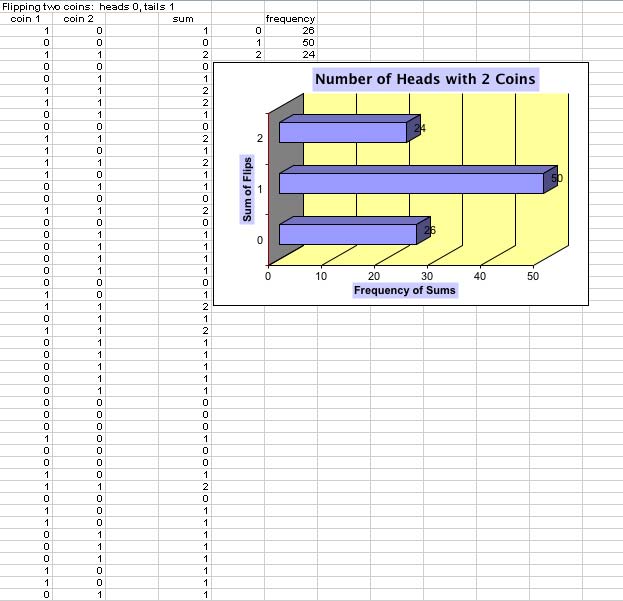
Two Coins
Here, I have added one more coin, for a total of two coins flipping at a time. I used Microsoft Excel to "flip" these coins as well, and recorded the outcomes, where 0 is heads and 1 is tails. Again, I have only shown the first few flips for space reasons. Once the coins were flipped, I added the amounts together. The possible sums were 0 + 0 = 0 (which means both coins landed on heads, since there were two zeros), 0 + 1 = 1 or 1 + 0 = 1 (which means that one of the coins was heads and the other was tails), or 1 + 1 = 2 (which means that both coins were tails, since there were two ones). Next, I found the frequency of the possible sum outcomes. The spreadsheet below shows that two heads appeared 26 out of 100 times (26%, which is close to the expected 25%), one head and one tail appeared 50 out of 100 times (50%, which is exactly the expected 50%), and both coins landed on tails 24 out of 100 times (24%, which is also very close to the expected 25%).

Probability of Getting 0 Heads:
Empirical: .24Theoretical: .25
Probability of Getting 1 Head:
Empirical: .50
Theoretical: .50
Probability of Getting 2 Heads:
Empirical: .26
Theoretical: .25
Let's look at another simulation of the same experiment:
Probability of Getting 0 Heads:
Empirical: .31
Theoretical: .25
Probability of Getting 1 Head:
Empirical: .47
Theoretical: .50
Probability of Getting 2 Heads:
Empirical: .22
Theoretical: .25